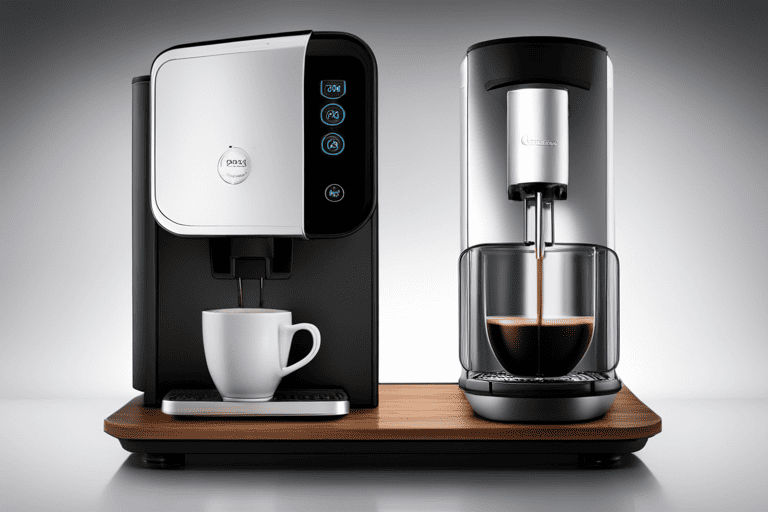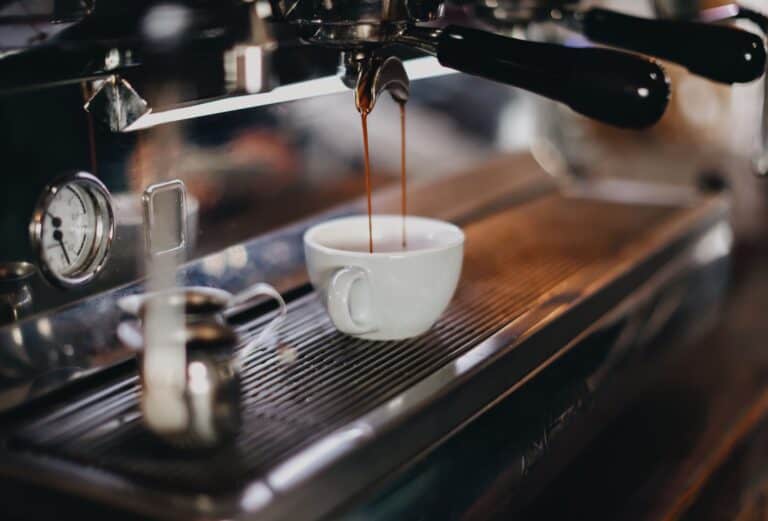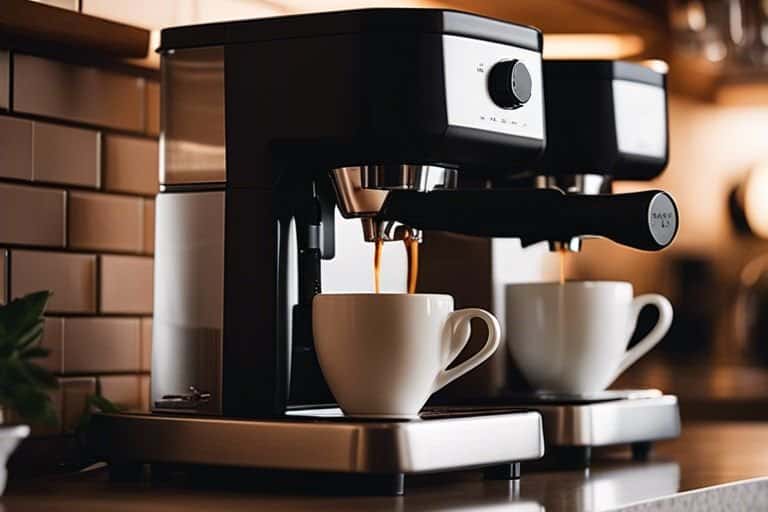Espresso Beans vs. Coffee Beans: Understanding the Key Differences
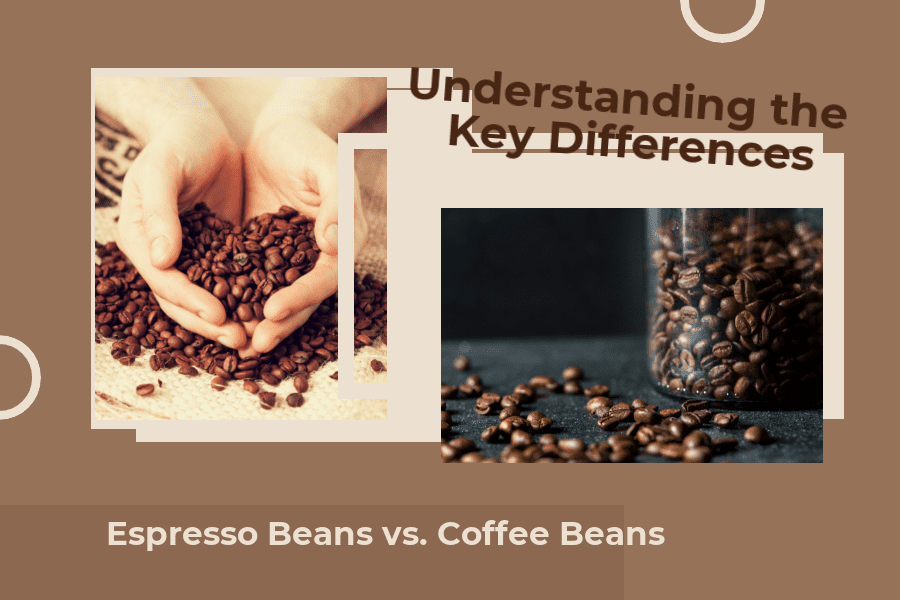
Espresso beans and coffee beans may seem like interchangeable terms for many coffee enthusiasts, but there is a world of difference between the two. The distinctions lie in their roast profile, preparation process, and the way each type of bean brings out distinct flavors in the coffee they produce.
One might wonder, “are espresso beans and coffee beans the same thing?” In short, yes: both types of beans originate from the same plant, Coffea. However, the journey to your cup varies depending on the roasting and brewing methods employed. This article delves into the nuanced world of espresso and coffee beans, unpacking their unique characteristics and helping you make an informed choice when purchasing your next bag of beans.
Armed with the knowledge of the differences between espresso beans and coffee beans, coffee lovers can optimize their brewing experience to suit their taste preferences. Whether you’re sipping on a robust espresso shot or a perfectly balanced drip coffee, understanding the nuances between these beans will elevate your coffee game and fuel your passion for the beloved beverage.
Types of Beans
Espresso Beans
Espresso beans are actually a type of coffee bean, but they are specifically roasted for the espresso-making process. These beans are typically roasted for a longer period, resulting in a darker and oilier appearance. Due to this roasting process, espresso beans often have a richer, bolder flavor profile which is desired when creating a concentrated shot of espresso.
Some common espresso bean varieties include Arabica, Robusta, and blends of these two. Arabica beans are known for their nuanced flavors and lower acidity, while Robusta beans are more bitter and higher in caffeine content. High-quality espresso beans will generally be sourced from specific regions and have undergone rigorous quality control processes.
Coffee Beans
Coffee beans refer to the general category of beans used to make all types of coffee. There are two primary types of coffee beans: Arabica and Robusta. While Arabica beans are often considered to be the higher quality variety due to their balanced flavors and mild acidity, Robusta beans are popular for their high caffeine content and stronger taste.
Beyond these two main varieties, coffee beans come in an incredibly diverse range of flavors, depending on factors such as growing region, altitude, and processing techniques. Some popular coffee bean origins include:
- Colombia: Known for their medium-bodied, balanced taste with fruity undertones.
- Brazil: Often characterized by nutty, chocolatey flavors with low acidity.
- Ethiopia: Famed for their complex, fruity, and floral tasting notes.
Different roasting levels can also have a significant impact on the flavor profile of coffee beans. Light roasts exhibit brighter acidity and more delicate flavors, while medium roasts have a more balanced taste with subtle chocolatey notes. Dark roasts, by contrast, can be quite bold in flavor, with deep caramel and smoky undertones.
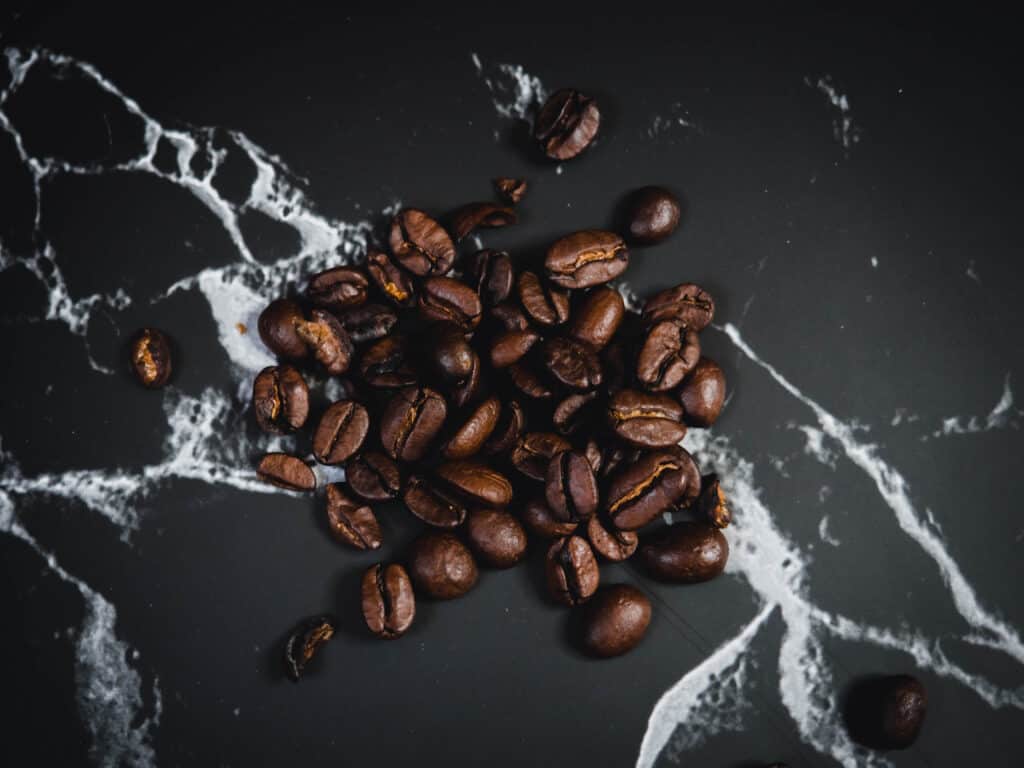
Processing and Roasting
When it comes to coffee, the processing and roasting of the beans play a significant role in determining the final flavor of the beverage. In this section, we will explore the differences in processing and roasting methods for espresso beans and coffee beans.
Roasting Espresso Beans
Espresso beans are generally roasted for a longer duration than coffee beans. This results in a darker roast that brings out the rich, bold flavors that are characteristic of an espresso. The roasting process typically follows these stages:
- Green beans are carefully selected for optimal quality.
- The beans are subjected to high heat, which triggers the Maillard reaction, responsible for browning and aroma development.
- When the desired roast level is achieved, the roasting process is halted, and the beans are cooled quickly.
Darker roasts, like those used for espresso, tend to have lower acidity levels and a more pronounced bitterness. Achieving the right balance of flavors is key to creating a delicious espresso shot.
Roasting Coffee Beans
Coffee beans, on the other hand, can be roasted to various levels, ranging from light to dark. Different roasts cater to different taste preferences and brewing methods. The stages of roasting coffee beans are similar to those for espresso beans, but with variations in roast levels:
- Light roasts highlight the fruity, floral, and acidic notes of a coffee bean.
- Medium roasts strike a balance between acidity, body, and flavor complexity.
- Dark roasts emphasize rich, bold, and bitter notes, with reduced acidity.
Ultimately, the choice of roast level and the specific roasting process employed depends on the desired flavor profile and the brewing method for which the beans are intended.
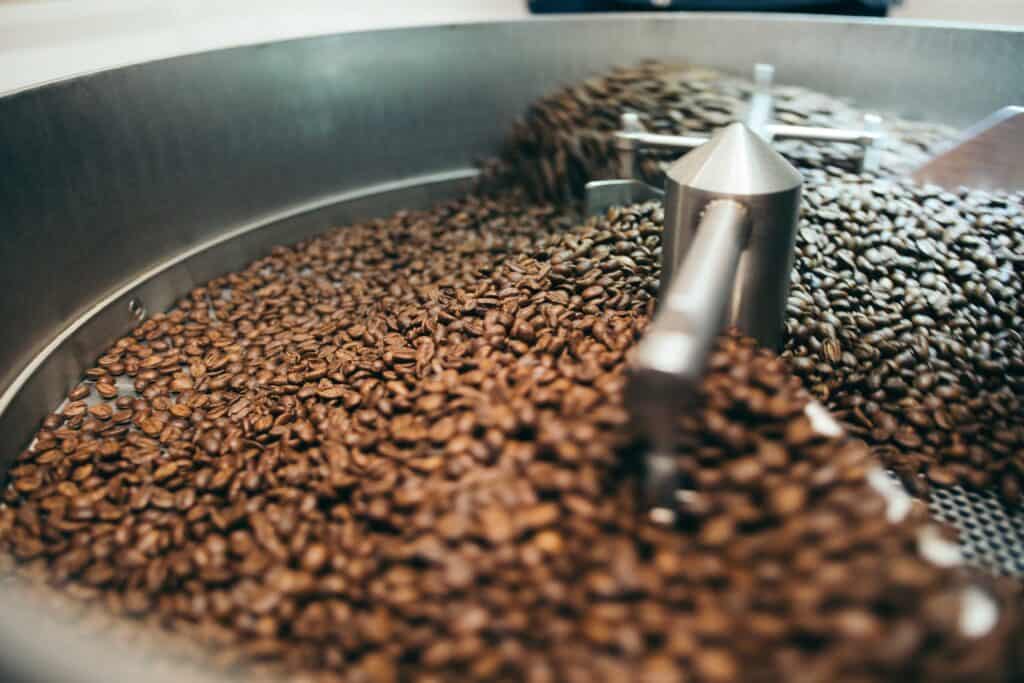
Flavor Profiles and Characteristics
Espresso Bean Flavor
Espresso beans typically have a rich and bold flavor profile. They are often roasted to a medium or dark level, which creates a strong taste that is often described as robust and full-bodied. The roasting process also brings out distinct flavors like chocolate, nutty, and caramel undertones.
Roasting profiles for espresso beans can vary mildly by roaster and bean origin. Some espresso blends may have a slightly fruity or citrusy flavor that comes from the natural flavors in the coffee beans. Through the extraction method used for espresso, these flavors become concentrated and pleasant for the palate.
Coffee Bean Flavor
Coffee beans, on the other hand, can have a wide variety of flavor profiles depending on the variety, origin, and roast level. Ranging from light and fruity to dark and bold, the flavors in coffee can be incredibly diverse.
Light roasts often have brighter, more acidic flavors with a mild body. These beans retain more of their natural flavors, resulting in fruity, floral, and citrus notes. Medium roasts provide a balance in taste, offering a more rounded and smooth flavor profile. Dark roasts, like those used for espresso, have a stronger and more robust taste but can also exhibit underlying chocolate and caramel notes depending on the bean type.
To compare and appreciate the different flavors in coffee and espresso beans, you might find it helpful to:
- Taste a variety of blends and single-origin beans
- Experiment with different roast levels
- Try different brewing methods
By doing so, you can further understand and enjoy the diverse landscape of flavors that both espresso and coffee beans have to offer.
Brewing Methods
In this section, we will explore the different brewing methods for espresso and coffee, detailing the techniques that bring out their unique flavors and characteristics.
Brewing Espresso
Espresso is brewed using an espresso machine that forces hot water through finely ground coffee beans at high pressure. This results in a concentrated coffee with a rich, bold flavor and a characteristic crema on top. Some popular espresso-based drinks include:
- Americano: Espresso diluted with hot water
- Cappuccino: Espresso mixed with steamed milk and milk foam
- Latte: Espresso combined with a larger amount of steamed milk
It is crucial to use the right grind size for espresso – too coarse, and it may taste weak; too fine, and it can cause over-extraction, leading to a bitter taste. Here are some key elements to perfecting your espresso brewing process:
| Aspect | Tips |
|---|---|
| Grind size | Fine, but not too powdery |
| Dosing | Typically between 18-20 grams per double shot |
| Tamping | Firm and even to ensure proper water flow |
| Extraction time | 25-30 seconds for a balanced flavor profile |
Brewing Coffee
There are numerous methods for brewing coffee, each with its own unique process and resulting flavors. Some of the most popular methods include:
- Drip coffee: uses a paper or metal filter to separate grounds from the water
- French press: steeps coffee grounds in a plunger pot before pressing the grounds to the bottom
- Pour-over: involves manually pouring hot water over coffee grounds, like the Chemex or V60
- AeroPress: a combination of immersion and pressure brewing that produces a clean and smooth taste
When brewing coffee, it is important to consider factors such as grind size, water temperature, and brewing time. Here are some general tips for brewing coffee:
| Aspect | Tips |
|---|---|
| Grind size | Varies by method – coarser for French press, finer for pour-over and drip coffee |
| Water temperature | 195-205°F (90-96°C) to extract the full spectrum of flavors |
| Brewing time | Depends on method – usually between 3-5 minutes |
| Coffee-to-water ratio | Generally, 1:15 – 1 gram of coffee for every 15 grams of water |
Caffeine Content Comparison
When it comes to caffeine content, many people wonder if there is a significant difference between espresso beans and coffee beans. In general, the roasting process doesn’t affect the amount of caffeine significantly. However, it’s the brewing method that can make the difference.
Espresso is typically brewed by forcing hot water through finely ground coffee under high pressure, which results in a concentrated and strong beverage. This brewing method extracts more caffeine per ounce than regular drip coffee. On average, a 1-ounce shot of espresso may contain about 63 milligrams of caffeine, whereas a 6-ounce cup of drip coffee holds around 95 milligrams of caffeine.
Although the concentration of caffeine is higher in espresso, keep in mind that regular coffee is typically consumed in larger quantities. To put this into perspective, the following table compares caffeine content in different servings:
| Beverage | Serving Size | Caffeine Content |
|---|---|---|
| Espresso | 1 ounce | 63 mg |
| Drip Coffee | 6 ounces | 95 mg |
| Espresso (double shot) | 2 ounces | 126 mg |
In conclusion, the caffeine content in espresso beans vs. coffee beans is relatively similar, and it’s the brewing method that makes the caffeine difference in the final beverage. It’s essential to consider the serving size and personal caffeine tolerance when choosing between espresso and drip coffee.
Choosing the Right Beans for You
When it comes to selecting the perfect beans for your preferred taste, it’s essential to understand the differences between espresso beans and coffee beans. Although they both originate from the same plant, the way they are processed and brewed affects their flavor profiles.
Espresso beans are usually roasted for a longer period, resulting in a darker roast. This gives them a richer, more intense flavor that is ideal for espresso. On the other hand, coffee beans come in various roast levels, ranging from light to dark, allowing for a wider variety of flavors to suit individual preferences.
Consider the following factors when choosing the right beans:
- Flavor preference: If you prefer bold, robust flavors, opt for dark roast espresso beans. If milder flavors are your preference, a lighter roast coffee bean might be a better choice.
- Brewing method: Espresso beans are specifically designed for espresso machines and may not produce the best results in a regular drip coffee maker. Similarly, using coffee beans in an espresso machine may not achieve the desired result.
- Origin: The geographical location where the beans are grown can have a significant impact on their flavor. Beans from Central and South America often have brighter, fruity notes, while beans from Africa and Asia can offer a more intense, earthy taste. Choose beans from your preferred region to cater to your taste buds.
- Blends vs. single-origin: Blends contain beans from multiple locations, creating a unique flavor profile that may be more balanced and versatile. Single-origin beans, in contrast, allow you to experience the pure taste of beans from a specific region.
Remember that taste is subjective, and it’s essential to experiment to find the beans that best suit your palate. Coffee and espresso beans will offer different experiences, but with a bit of trial and error, you can discover the perfect beans to satisfy your caffeine cravings.
Conclusion
In the end, the distinction between espresso beans and coffee beans lies mainly in the roast level and intricacy of flavors. Espresso beans are generally roasted darker to produce a bolder taste, suitable for the concentrated form of espresso. Coffee beans, on the other hand, can be of various roast levels, each offering unique flavors and aroma profiles.
When choosing between espresso or coffee beans, one should consider their personal preferences and brewing methods. While espresso beans can be used in multiple brewing methods, they may not suit everyone’s taste buds, as some may prefer lighter roasts and more delicate flavors.
To enjoy the best of both worlds, experimenting with different roasts and brewing methods is encouraged. Moreover, remembering that freshness is key, it’s always recommended to buy whole beans and grind them at home just before brewing. This will help ensure an exceptional coffee or espresso experience.
RECOMMENDED READS
Best Espresso Beans: Top Picks for Rich and Bold Flavor
Caffeine in Espresso Beans: How Much is in Your Cup?
